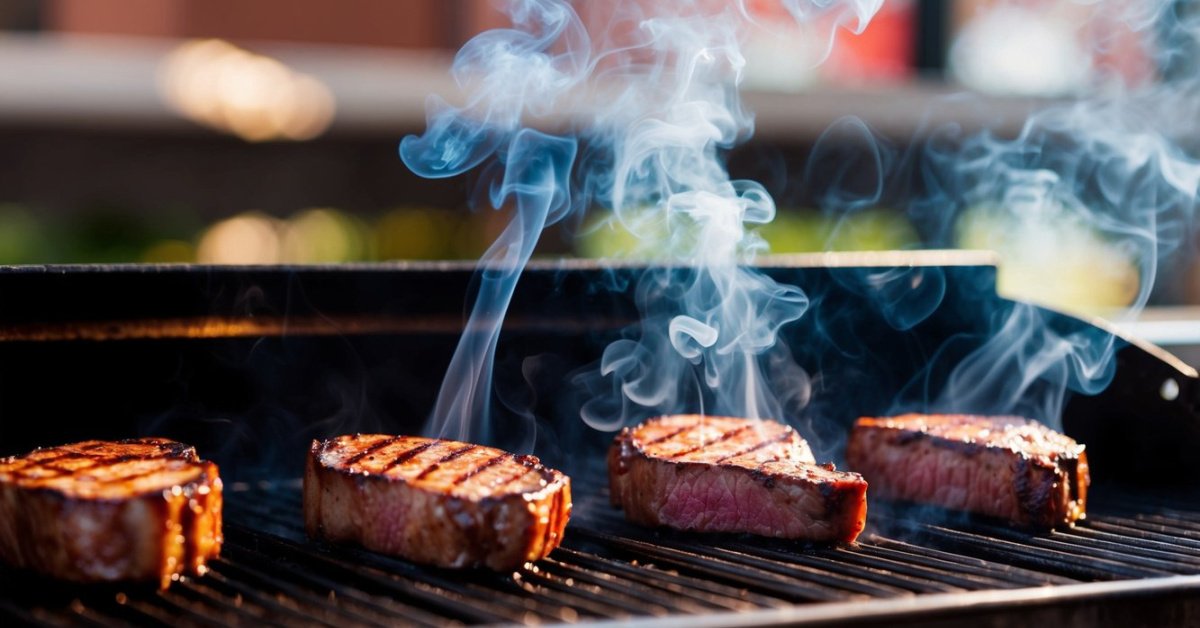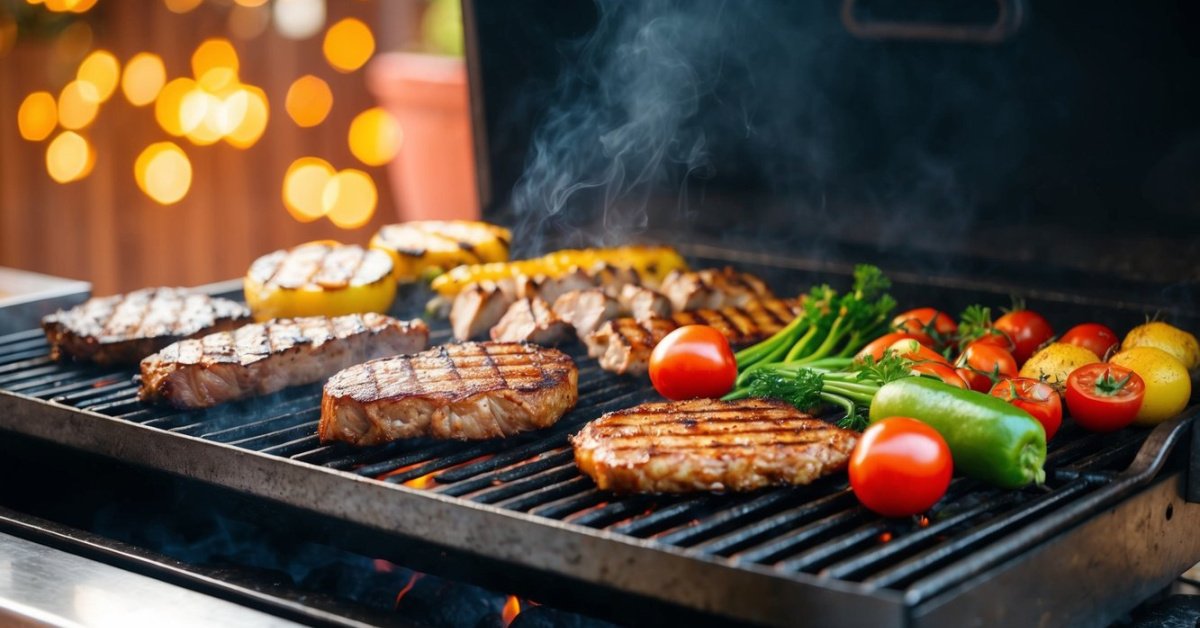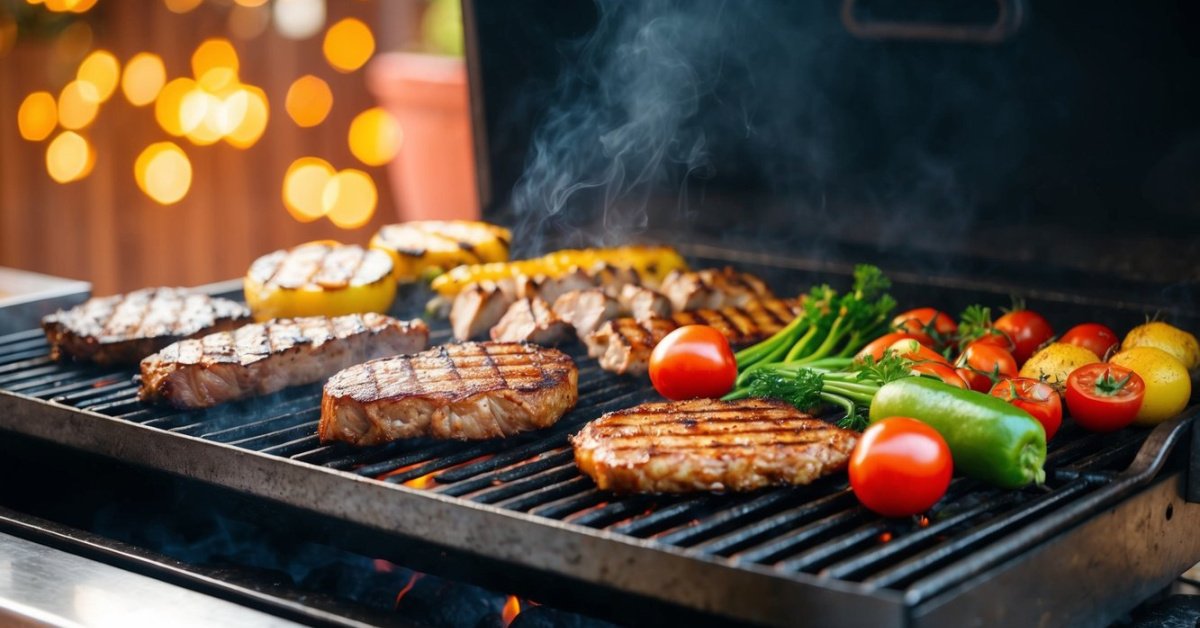Cooking the perfect steak on a gas grill might seem daunting, but with a few simple tips, you can master it in no time. I remember the first time I grilled a steak just right—it was a game-changer for my BBQ sessions.

In this guide, I’ll walk you through the essentials, from choosing the right cut to achieving that mouthwatering sear. Whether you’re a grilling newbie or looking to up your steak game, these steps will help you serve juicy, flavorful steaks every time.
Ready to fire up the grill and impress your friends and family? Let’s dive into the art of grilling the perfect steak on a gas grill.
Choosing the Right Steak
Selecting the perfect steak enhances your grilling results. I prioritize quality and key characteristics for a flavorful outcome.
Selecting the Cut
Choose cuts like ribeye, sirloin, or filet mignon. Ribeye features abundant marbling for rich flavor. Sirloin offers lean meat with robust taste. Filet mignon ensures exceptional tenderness. Each cut caters to different grilling preferences and desired textures.
Understanding Thickness
Opt for steaks 1 to 1.5 inches thick. Thicker steaks achieve a superior sear and maintain juiciness. Thin steaks cook quickly, reducing the risk of overcooking. Consistent thickness ensures even cooking and optimal flavor.
Preparing the Steak
Proper preparation ensures a flavorful and tender steak. I focus on seasoning and bringing the steak to room temperature before grilling.
Seasoning Techniques
I use a simple seasoning blend to enhance the steak’s natural flavor. Common ingredients include kosher salt, freshly ground black pepper, and garlic powder. For added depth, I include herbs like rosemary or thyme. I apply the seasoning evenly on both sides, ensuring full coverage. Allowing the steak to rest with the seasoning helps it penetrate the meat.
Bringing to Room Temperature
I let the steak sit at room temperature for about 30 minutes before grilling. This step ensures even cooking and prevents a cold center. If the steak remains cold, the exterior may overcook while the inside stays underdone. Bringing the steak to room temperature promotes a consistent and juicy result.
Setting Up the Gas Grill
Getting your gas grill ready sets the stage for a perfect steak. Here’s how I prepare mine for optimal grilling.
Preheating the Grill
Preheating ensures a strong sear and even cooking. I turn my gas grill to high heat, aiming for 450-500°F (232-260°C). Let it preheat for 10-15 minutes until the grates are scorching hot.
Managing Heat Zones
Creating distinct heat zones controls the cooking process effectively. I set up a two-zone system:
- High Heat Zone: Maintains 450-500°F (232-260°C) for searing the steak.
- Medium Heat Zone: Reduces to 350°F (177°C) for finishing the steak to the desired doneness.
| Heat Zone | Temperature Range | Purpose |
|---|---|---|
| High Heat | 450-500°F (232-260°C) | Searing the steak |
| Medium Heat | 350°F (177°C) | Cooking to desired doneness |
This setup allows me to sear the steak quickly and then move it to the medium zone to ensure it cooks evenly without burning.
Cooking the Steak
Cooking the steak correctly ensures a flavorful and juicy result. Follow these techniques to achieve the perfect sear and desired doneness.
Searing Techniques
Searing locks in juices and creates a delicious crust. Heat the high zone of the grill to 450-500°F (232-260°C) before placing the steak. Place the steak directly over the high heat and let it cook without moving for 2-3 minutes. Flip the steak using tongs and sear the other side for another 2-3 minutes. This method forms a caramelized exterior while keeping the inside tender.
Achieving Desired Doneness
Monitor the steak’s internal temperature to reach your preferred doneness. For medium-rare, aim for 130-135°F (54-57°C); medium, 140-145°F (60-63°C); and medium-well, 150-155°F (65-68°C). After searing, move the steak to the medium heat zone to finish cooking. Use a meat thermometer to check the temperature accurately. Let the steak rest for 5 minutes to allow juices to redistribute before serving.
Resting and Serving
After grilling, I let the steak rest for five minutes. Resting allows juices to redistribute, ensuring a juicy bite. I cover the steak loosely with aluminum foil to keep it warm without trapping steam, which can soften the crust.
When serving, I slice the steak against the grain. This technique enhances tenderness by shortening the muscle fibers. I use a sharp knife to make clean cuts, preserving the steak’s structure and flavors.
Serving Tips
- Slice Thickness: Cut the steak into 1/4-inch slices for optimal texture.
- Presentation: Arrange slices neatly on a warm plate to maintain temperature.
- Garnishes: Add a sprig of rosemary or a pat of herb butter for extra flavor.
- Side Dishes: Complement the steak with grilled vegetables, mashed potatoes, or a fresh salad for a balanced meal.
Quick Reference Table
| Step | Action |
|---|---|
| Resting Time | 5 minutes |
| Cover | Loosely with aluminum foil |
| Slicing Method | Against the grain |
| Slice Thickness | 1/4 inch |
| Garnishes | Rosemary sprig or herb butter |
| Side Dishes | Grilled vegetables, mashed potatoes, salad |
Following these steps ensures your steak remains flavorful and tender, ready to impress your guests.

Conclusion
« Smoking Vegetables for Extra Flavor: Enhance Your Dishes with These Tips
Essential Food Safety Tips for Outdoor BBQs: Ensure a Safe & Delicious Grilling Experience »
Grilling the perfect steak has become one of my favorite ways to bring people together. There’s something special about the sizzling sound and the mouthwatering aroma that fills the air. Every time I fire up the gas grill, I’m reminded of how rewarding it is to create a delicious meal from scratch. Whether you’re a seasoned pro or just starting out, mastering steak on a gas grill is a journey worth taking. I hope you feel inspired to try out these techniques and enjoy the tasty results with your loved ones. Happy grilling!













